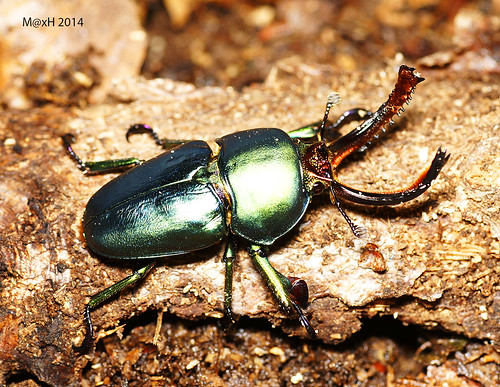Initially it was very confusing for me how to call these beetles correctly: mecynorrhina torquata or mecynorrhina ugandensis. It was a bit easier with a similar green beetle with no white stripes in the centre on the top called mecynorrhina torquata immacullicollis, which was one of my first beetles. Later I found out that according to (one of the) latest classification the mecynorrhina torquata has at least 4 subspecies: immacullicollis, poggei, torquata and ugandensis. So the full names of these subspecies will be mecynorrhina torquata immacullicollis, mecynorrhina torquata poggei, mecynorrhina torquata torquata and mecynorrhina torquata ugandensis. I knew that ugandensis and torquata can easily interbreed and produce fertile offspring so there was not much of a surprise there:). The existence of m.t. torquata and m.t. poggei was new information to me, although I saw the brown m.t. advertised as m.t. immacullicollis, which would fit into the description of m.t.t subspecies. Here I came across a wonderful map of the distribution of all 4 subspecies plus another popular related beetle from the same genus, mecynorrhina oberthueri ssp. Unfortunately, I cannot find the original resource, so if anyone knows it's German source, please let me know.
It is quite obvious that Mecynorrhina torquata ugandensis (often called Mecynorrhina ugandensis) and Mecynorrhina torquata immacullicollis (often called Mecynorrhina torquata) are the most popular species kept by hobbyists and breeders. Mecynorrhina torquata ugandensis has a massive variety of colourations and therefore is the most sought after by collectors, particularly large male specimens. Someone even said that there are no two Mecynorrhina ugandensis of the identical colour and pattern in the wild:)

















